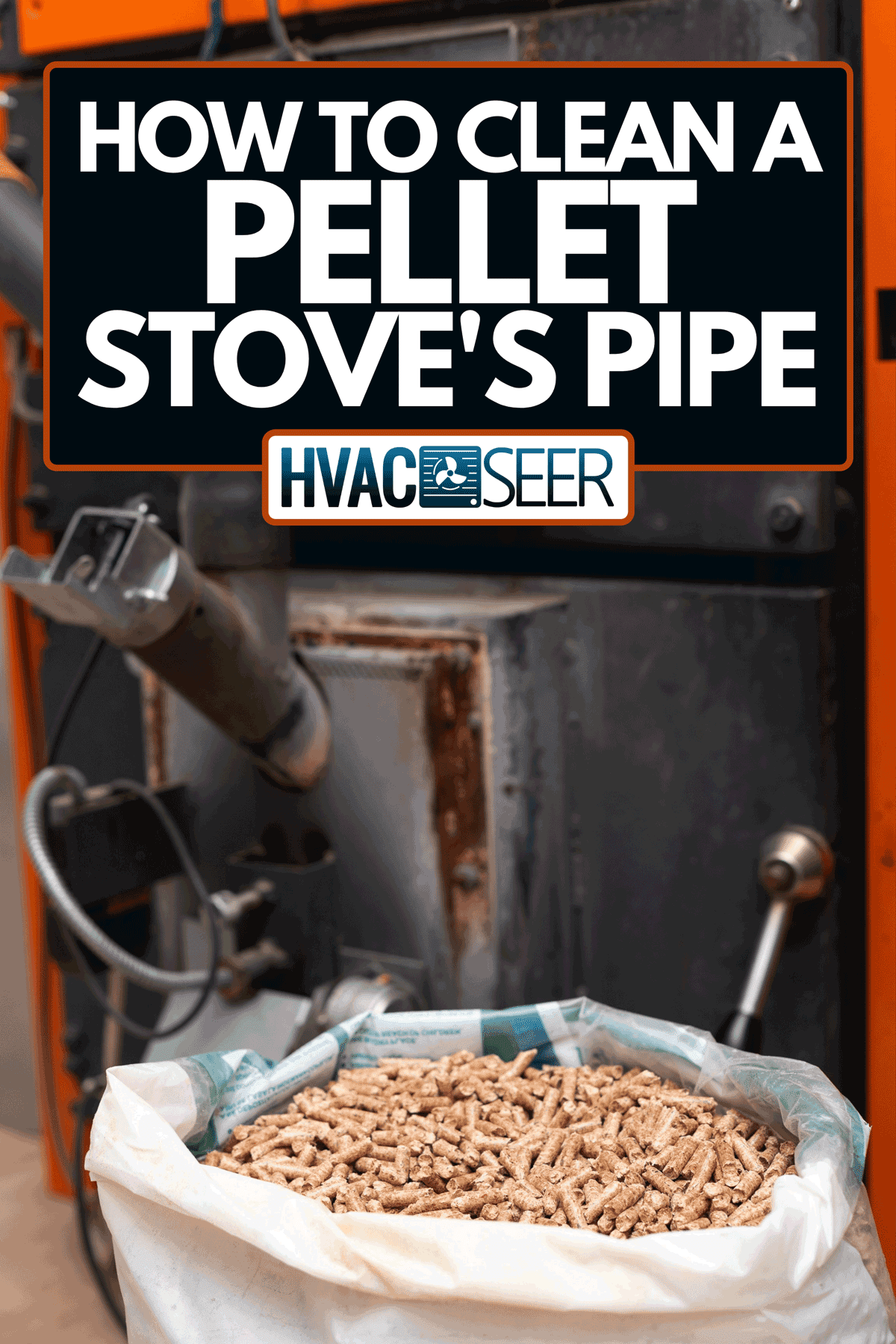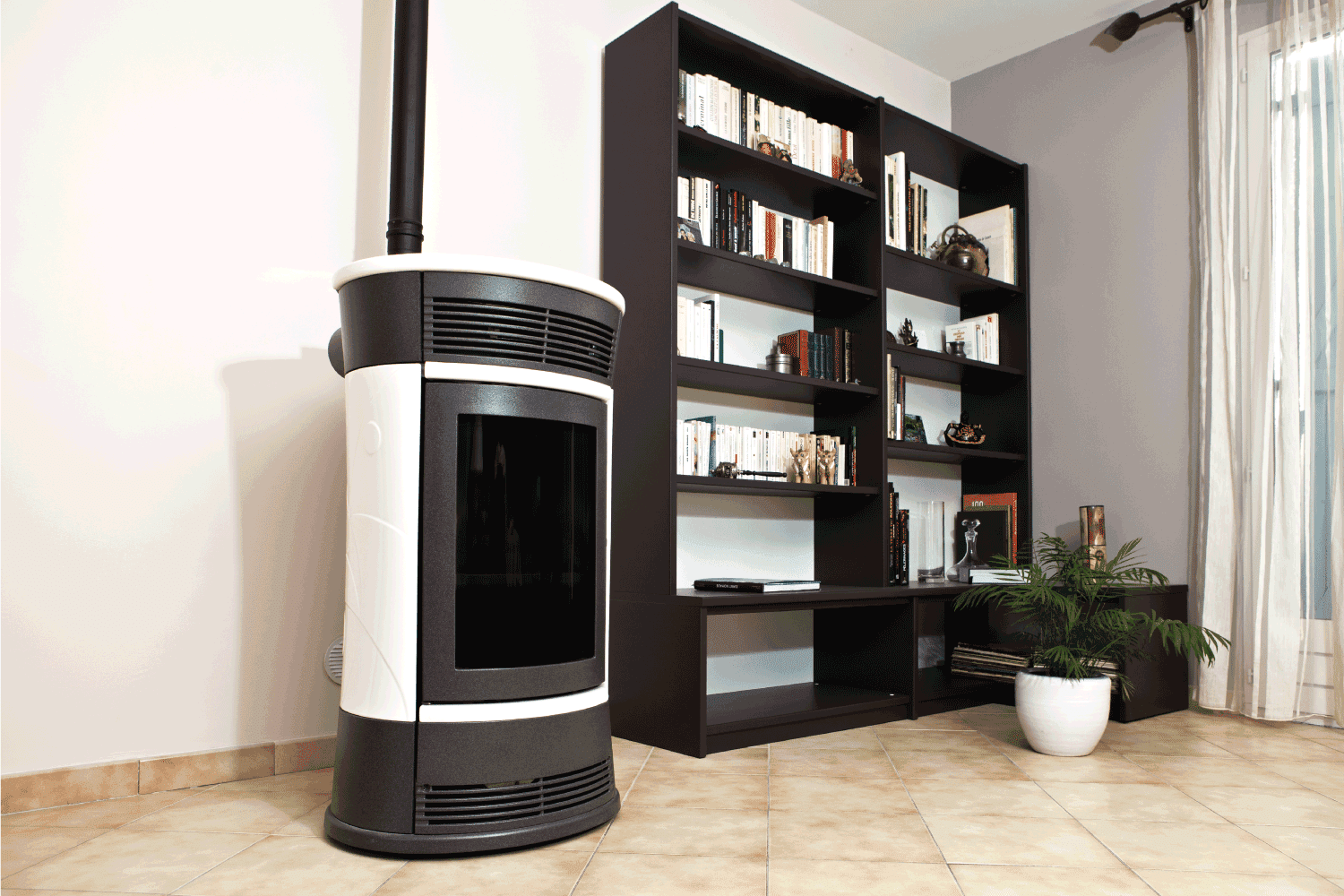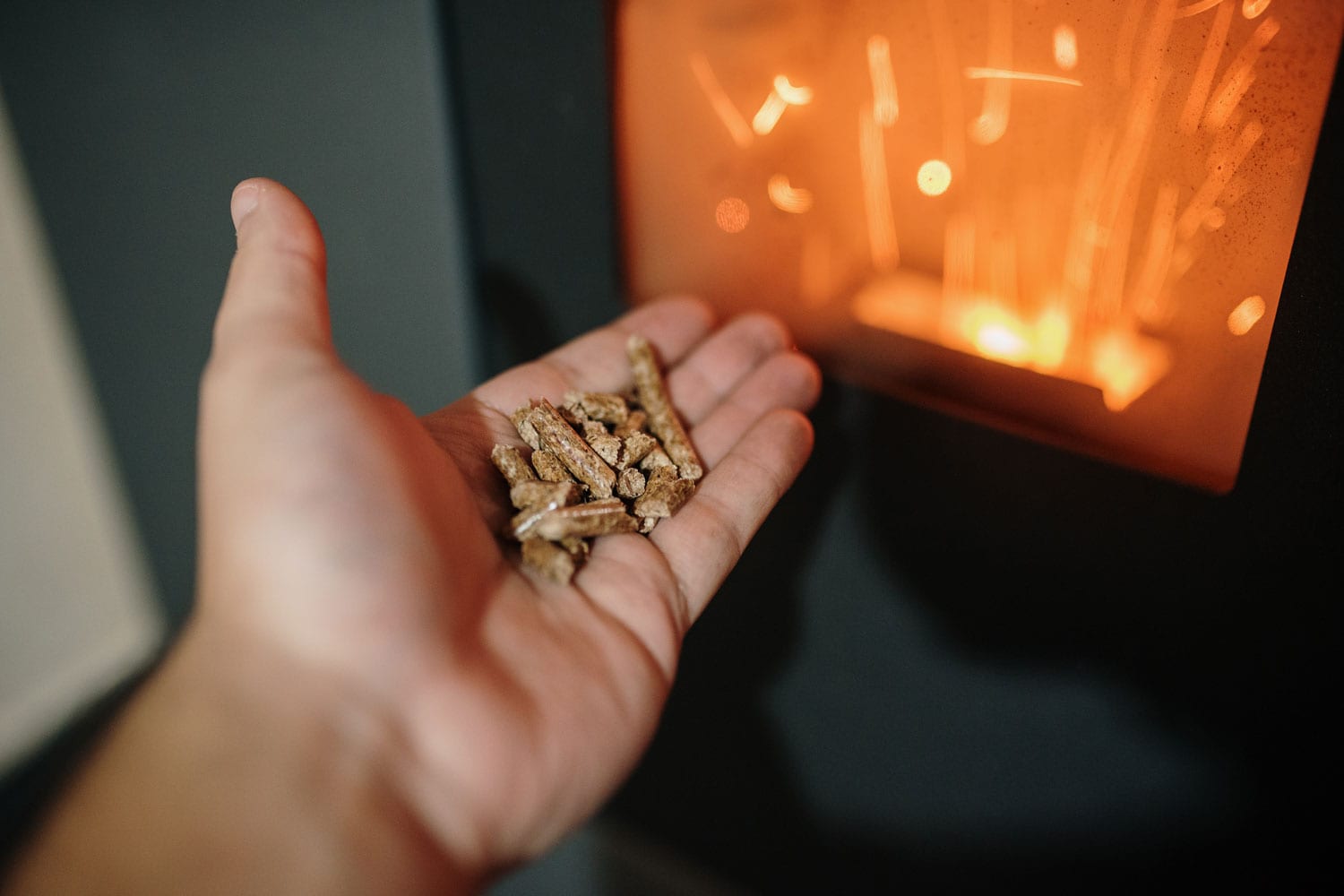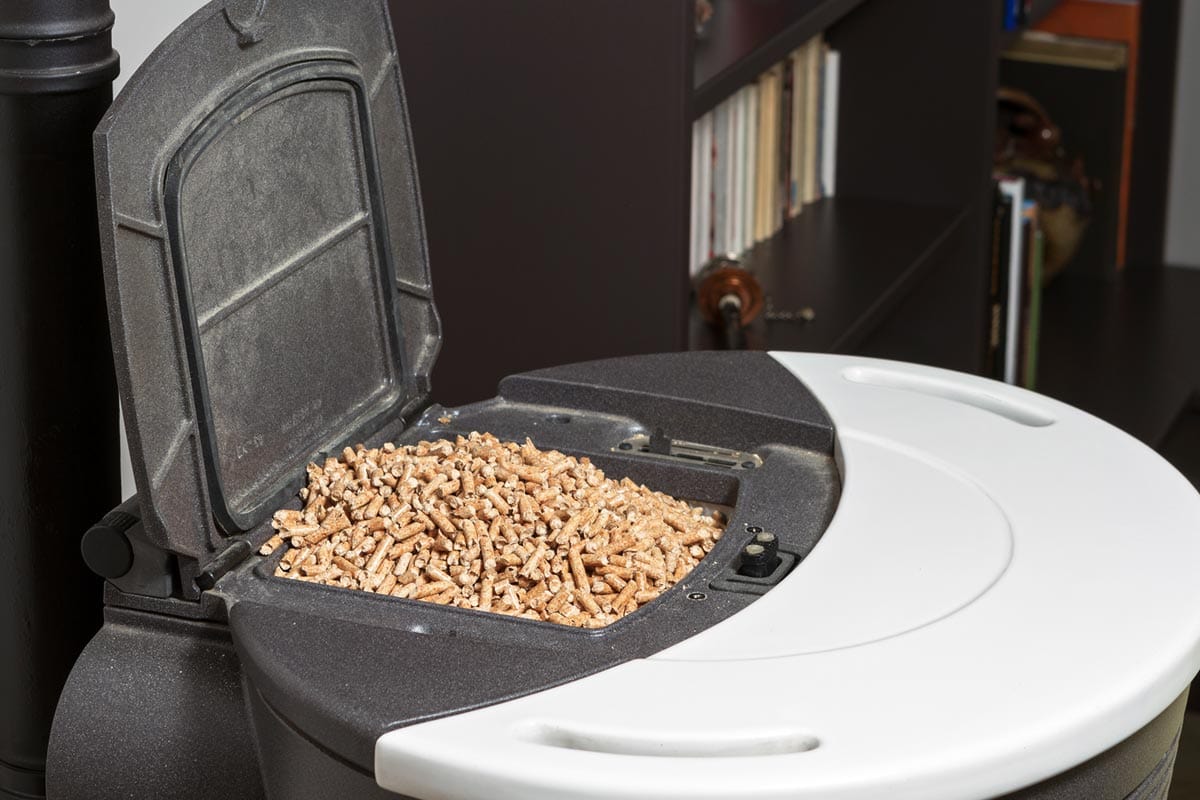As the months get colder and the nights longer, many homes utilize pellet stoves to stay warm more often. But burning more material and working your stove longer means you're going to have to make sure it's clean. So, how do you best clean your pellet stove safely? We here at HVACSeer.com have researched the subject for you and written about it in this post.
Cleaning out the pipes of your pellet stove using pipe brushes is the best way to remove the build-up of creosote. Avoid stiff-bristled brushes that may damage the linings of your vent. You might have to remove parts of your piping to get to all the necessary piping components. You'll also need a way to gather the ash and creosote you remove.
This process involves multiple steps and takes some effort, so continue reading as we go more into depth below. Please continue reading to find out how more about the cost and time commitment with cleaning a pellet stove.

Do Pellet Stoves Cause Creosote?
For many people, the clean-burning nature of pellet stoves is one of their biggest draws. They aren't entirely clean-burning, but they produce less waste than your average burning stove. Pellet stoves use compressed pellets made of a mixture of waste paper, sawdust, and wood chips as fuel.
This compact fuel and the stove's design allow for much higher combustion heat than usual. These higher temperatures burn away most of the creosote before it forms.
That being said, slower accumulating creosote is not the same as non-existent creosote. You will need to eventually clean out the accumulation for the health and safety of both stove and home.
Read now on HVACSeer.com: 'How much electricity does a pellet stove use?'
How to Clean Out your Pellet Stove's Pipes

Although pellet stoves are much cleaner burning than your average stove, you will need to eventually get to the pipes and clean them out. Allowing creosote to build up and remain in your pipes can cause an increase in fire risk and lets you see problems your stove might have before they escalate further.
When cold air hits the creosote built up in your pellet stove's pipes, it gathers moisture and turns into a sticky tarlike substance. Get to the creosote before this happens. Cleaning the lines takes a bit of extra effort but can be done with the following steps.
Allow your stove to cool
Unplug your stove after letting it sit for at least 24 hours. Doing so will ensure that no embers are still alive while you are working on your pipes. Choose a calm day without any downdrafts that can reverse the airflow through the vent pipes. You can open a room window to create negative pressure and counteract any potential slight downdrafts that might occur.
Locate the pellet stove's clean-out tee
The clean-out tee is a T-shaped section of pipe that signals change from horizontal to vertical and allows easy access for cleaning. The tee is usually behind the stove but may be outside the home in some instances. If inside the house, spread a sheet over the floor under the interior portion of the stove. Remove the clean tee's cover.
Separate the pipe
Remove two pipe sections behind your stove if your pellet stove doesn't have a clean-out tee. You can either use a screwdriver to remove two pieces that are screwed together or cut through any sealant on pieces that friction fit together instead.
Prepare your area
Lightly dampen a blanket or sheet and drape it over the end of your vent pipe. You can also loop it over the open end of the tee and adjacent horizontal pipe. Set a bucket underneath the pipe and arrange the sheet so that any stray ash or creosote gets knocked into the bucket. Doing so will keep the interior of your home clean and safe.
Cleaning the pipes
Start cleaning the vent pipe from the outside opening, using either a three or four-inch plastic or flexible steel-bristled brush. You can lengthen these brushes as necessary with rods.
Alternately, you can attach ropes to your brushes and lower them down the pipes, one at a time, to the bottom of the open vent in the house. Have a second additional helper grab the rope and work the brush back and forth.
Use a swirling motion as you clean down the pipe and a reverse swirl motion as you clean back up the pipe. Doing so will ensure complete coverage cleaning. Repeat until you see a noticeable decrease in ash. Shine a flashlight down the interior to double-check your cleaning before wrapping up.
Clean up
Replace the chimney cap and any screening once you are finished brushing. Wait around 15 minutes before proceeding if you did the job yourself to allow the creosote and ash to settle on the other end of the fly pipe fully.
Unwrap the clean-out tee opening, gathering the sheet as you work to contain as much of the ash and creosote as you can. Sweep out the end of the pipe to get the last of the debris.
Recap the tee, or rejoin the pipes depending, and cover with a high-temperature silicone sealant designed for the purpose. Some final minor cleanup, and you've finished the pipe cleaning process.
We've included a helpful video including good pipe cleaning for you here down below to help visualize the process.
Read now on HVACSeer.com: 'Do pellet stoves get hot to the touch?'
What Happens if you Don't Clean a Pellet Stove?

We know that's a fairly involved process that might leave you wondering if the whole thing is essential. What would happen, for example, if you didn't go through the effort? Taking the time to clean out the pipes of your pellet stove will save you time and money in the long run, and we can break down why.
It mainly comes down to keeping your stove working efficiently and maintaining the safety of those in your home. If ash and creosote build up in your pellet stove over time, it won't work as well, having to work harder to push less heat through stopped up pipes.
Temperture control, airflow control, and the ability to light your stove all suffer under increased buildup. Going to your stove on a frigid day, only to find out it isn't lighting for you, is far more inconvienant than working on the pipes for an afternoon.
There's also the simple fact that interacting with creosote over an extended period of time simply isn't healthy. It won't do lasting damage when you're cleaning it out of your pipes for a day (though avoiding direct inhalation is always a good idea), but prolonged exposure to substantial buildup of creosote can pose health risks to those in the home.
Cleaning and maintenance also help your stove last longer. This is true of all plumbing, piping, and machinery. Maintenance goes a long way in prolonging a system's lifespan and saving you money on replacements in the long run.
Cleaning out ash and creosote also removes rust from piping as a result. Plus, you'll be clued in on any potential problem spots that need replacing or fixing.
How Often Should you Clean Pellet Stove Pipe?

There are a lot of factors that go into potential creosote buildup. The quality of your stove, the fuel you use, and the amount of time your stove spends burning all factor into how often you should be cleaning it. There is no clear-cut exact answer for this question, but there are general criteria for buildup.
You're generally going to want to never have buildup thicker than a quarter of an inch in your pipes. Check your pipes semi-regularly until you have a grasp on what it takes to build up that amount of creosote, and then clean out those pipes accordingly.
How Much Does it Cost to Have a Pellet Stove Cleaned?

If it all comes across as a bit too much, there is, of course, the option to get your stove professionally inspected. The cost of a professional cleaning again varies depending on the size and model, whether it is free-standing or inserted, and how well it has been previously maintained.
The average cost for professionally cleaning a pellet stove is between 200 and 270 dollars. The national average is 250 dollars, with minimum and maximum prices ranging between 150 and 300 dollars.
Remember that in order to truly be effective, you need to regularly maintain cleanings. Adjust your cleanings to the amount you use, the season, and the factors we mentioned above as necessary.
In closing
Pellet stoves offer many benefits when it comes to keeping homes warm. They're clean, effective, and pleasant to have in the home. But you need to be willing to put in the effort to keep them working effectively and safely.
We hope this article lets you know why it's important to keep your stovepipes clean and how to best go about it. May your pellet stove keep you warm and comfortable for many cold seasons to come.
